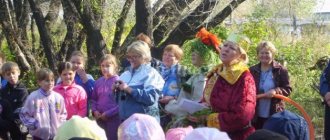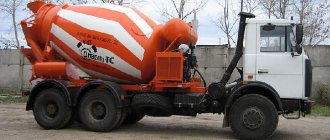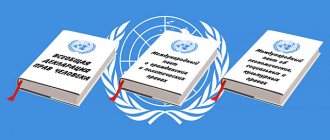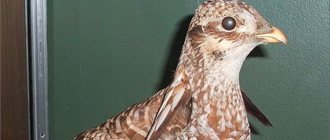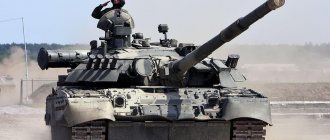Ground troops
This branch of the Russian Armed Forces is focused on conducting battles to ensure the security and defense of the state on land.
Motorized Rifle Troops (MSV)
This structure was formed in 1992. This is the most numerous type, consisting of motorized rifle units and subunits. MSVs are equipped with powerful weapons and effective command and control and reconnaissance equipment. They are designed to conduct combat independently or in combination with other types of aircraft.
Main goals:
- breaking through enemy defenses;
- defeat of the enemy;
- conquest of objects;
- pursuit of the enemy in case of retreat;
- holding positions;
- repelling enemy attacks;
- conducting oncoming battles.
Motorized infantry is characterized by high mobility and maneuverability.
Tank troops (TV)
The Russian Federation inherited strong tank forces from the Soviet Union. True, by 2009 the number of combat vehicles decreased from 23 to 2 thousand units.
TV is the main striking force of the army on land. They are equipped with all-terrain vehicles. Tanks of various types are fully armored. They are used in the main directions to deliver powerful and deep blows. Reliable protection, maneuverability and impressive firepower allow you to achieve your desired goals in a short time.
Tank forces
Missile Forces and Artillery (RF&A)
The missile defense forces were created in the early 60s as a result of the introduction of missile weapons. Such military units and formations serve as means of fire destruction and are capable of destroying enemy groups, air defense facilities, and hitting control posts and communication nodes.
The missile defense forces have missile systems and artillery systems. Constant attention is paid to the development of new ammunition widows.
Rocket Forces and Artillery
Air Defense Forces of the Ground Forces (Air Defense Forces)
Air defense troops repulse an enemy attack from the air. They carry out tasks to cover soldiers and rear facilities. This type of defense is organized in all types of combat. It includes reconnaissance and military air operations.
The Air Defense Army is equipped with equipment that has no foreign analogues. Its improvement is carried out by increasing maneuverability, endurance, high automation, and reducing the size of missile systems.
Air Defense Forces of the Ground Forces
Special troops
Special troops are military institutions that are designed to solve certain problems and support combat activities on land.
Corps of Engineers
Engineering troops are needed to accompany the military during an offensive, provide engineering reconnaissance and provide equipment to the battle area. They include various institutions and enterprises:
- military units;
- road engineering;
- pontoon connections;
- engineering and sapper.
In peacetime, special units of the engineering troops carry out measures to remove people from dangerous areas and eliminate the consequences of man-made and natural emergencies. To carry out combat missions, they use modern equipment, unique protective clothing of the latest generation, capable of protecting against mine explosions.
Corps of Engineers
RCB Defense Troops (RCBZ)
Chemical troops are capable of quickly carrying out tasks in extreme situations. They are designed to eliminate dangerous threats of a chemical and biological nature and the consequences of large-scale environmental disasters.
RKhBZ fighters mark the boundaries of areas of infection, conduct reconnaissance of the area and carry out procedures for disinfecting the territory. Chemical troops soldiers launch flamethrower mixtures for mass destruction of the enemy, organize activities for the transportation and release of waste radioactive substances.
Important! Thanks to the desperate feat of military chemists, it was possible to promptly eliminate the threat of a man-made disaster in connection with the accident at the Chernobyl nuclear power plant.
NBC protection troops
Signal Corps
A special branch of the military is engaged in the deployment of a communications system, the operation of automation equipment in control centers, and the provision of digital equipment. This includes:
- linear nodal parts;
- postal service;
- communications security service;
- communication technology divisions.
Signal equipment includes:
- equipment for voice-frequency telephony;
- photo and television equipment;
- message encryption devices;
- mobile stations.
Structure and weapons
Each of the four districts consists of armies, which include divisions, brigades, regiments, battalions, companies and platoons. The smallest military formation is considered to be a squad. Its number varies depending on the type of troops. It is controlled by a junior sergeant or sergeant. All squad commanders are subordinate to the platoon commander, who, in turn, are subordinate to the company commander. A platoon can have from two to four squads.
A motorized rifle squad usually consists of 9-13 people. In departments of other branches of the military, the number of military personnel can vary from 3 to 15 people. Squads may be called differently, for example, in the tank forces of the Russian Federation they are called crew, in missile forces - crew. Each subsequent military unit consists of 2-4 lower formations.
The regiment and brigade belong to operational tactical organizations. A colonel is appointed commander of the units. The division is a step higher. Typically one unit includes main and additional shelves. For example, a motorized rifle unit may have three regiments of specialized troops and one tank, anti-aircraft missile regiment, communications battalion, transport battalion, engineer and medical battalion, chemical company, and auxiliary platoons.
An army is a large operational formation that includes various divisions and brigades. The formation is commanded by a colonel general. Several armies are already forming a district. Thus, the districts include:
- West. The headquarters is located in St. Petersburg. Consists of a tank army, a combined arms army and a guards army.
- Southern. Includes three combined arms armies, the headquarters is located in Rostov-on-Don.
- Central. Formed from the guards and combined arms army. The headquarters is located in Yekaterinburg.
- Oriental. The largest unit, including four combined arms armies and one army corps.
In wartime, instead of a district, the concept of front is introduced. It is never divided by types of troops. The army is armed with: tanks, infantry fighting vehicles, armored personnel carriers, artillery pieces and tactical systems, self-propelled guns, tugboats, anti-tank weapons, and communication systems. The infantry is armed with: machine guns, machine guns, rifles, pistols, grenade launchers, checkers and grenades. In 2022, the Uran-9 robotic complex was put into service.
Aerospace Forces
The Russian Aerospace Forces are organized to conduct combat in space and airspace. Their goal is the defense and security of the state. They were formed in 2015.
Air Force
The Air Force was created to protect important installations from attacks from the air or from space, ensuring the combat of the navy and ground units. The Air Force has certain functions:
- maintaining power in the sky;
- defeat of enemy ships in the sea and coastal areas;
- conducting aerial reconnaissance;
- protection of border air strips;
- notifying the headquarters of the Armed Forces about an enemy attack.
This type of armed forces includes several structures.
Air Force
Long-range aviation
Long-range aviation solves a lot of problems. These include:
- defeat of enemy ships;
- elimination of enemy industrial and energy facilities;
- ensuring combat readiness at the proper level.
Today, the main directions for the development of long-range aviation are the modernization of combat aircraft and the development of innovative aircraft systems.
Long-range aviation
Frontline aviation
Front-line aviation was created to conduct combat and solve problems in the operations of the Navy, Ground Forces and Air Force. This structure intercepts and destroys targets in the air, covers the army and rear facilities, conducts reconnaissance and searches for moving targets.
Front-line aviation is armed with aircraft equipped with various weapons and technological equipment.
Attention! Front-line aviation is also called “tactical”, “operational-tactical”.
Frontline aviation
Army aviation
The next component of the Air Force is designed for conducting aerial reconnaissance, supporting fighters on land, and landing troops. Army aviation is usually divided into 4 types:
- assault;
- intelligence;
- special purpose;
- transport.
All categories are armed with helicopters and airplanes.
Important! The country values the professionalism of army crews. Our compatriots were able to perform the Nesterov loop on the Black Shark.
Army aviation
Military transport aviation
The first day of summer is the date of birth of VTA. Over its long journey, military transport aviation has gone through a serious development path. Today this unit solves all types of operational and strategic problems.
The main task of the BTA is the transfer of units with military equipment. It has at its disposal domestic aircraft that cover up to 8 thousand kilometers by air.
Currently, this type of aviation is developing comprehensively. New aircraft and helicopter equipment are being supplied, and transport equipment is constantly being modernized.
Military transport aviation
Special aviation
Special aviation is designed to transfer fuel to aircraft, provide meteorological support, and rescue the wounded. Its employees refuel aircraft and conduct electronic warfare.
During military operations, special aviation uses heavy-duty aircraft and tankers capable of reaching speeds of up to 850 km per hour.
Interesting! In America, special aviation is usually called auxiliary.
Special aviation
Anti-aircraft missile forces (ZRV)
Air defense missile systems are necessary to protect important state and army facilities from enemy air strikes. The main firepower of the Air Force is equipped with highly accurate anti-aircraft missiles for various purposes.
The S-300, S-400, and Pantsir-S1 air defense systems are in service. The combat strength and staff may vary depending on the assigned combat mission and the characteristics of the protected objects.
Anti-aircraft missile forces
Radio technical troops (RTV)
RTV are the main source of information about enemy aircraft. They are designed for reconnaissance and control of aircraft flights.
Radio technicians provide information about the beginning of an attack in the air. RTVs are equipped with radar systems that detect any targets.
Radio technical troops
Air and Missile Defense Troops
Air defense and missile defense forces repel aggression from the air and protect against enemy attacks. The main goal in wartime is to defeat enemy missile warheads.
Russia's integrated air defense system is one of the most powerful and advanced in the world. A new generation of missiles is currently being developed.
Space Force
Space structures are assigned a wide range of tasks:
- observation of objects in space;
- launching devices;
- satellite control;
- identifying threats to the country from outer space.
Integrated lesson for students of the senior group of preschool educational institutions “We will serve in the Army”
- November 20, 2018
International and All-Russian competitions
All-Russian competition of pedagogical excellence “Methodological piggy bank of a kindergarten teacher”
The plan - summary of a complex integrated lesson is designed for children of senior preschool age. Contains an interesting plot, colorful and accessible for this age. Has techniques for activating children, such as asking riddles, a surprise moment, a competitive moment, and reading poems.
1. Educational objectives:
- Clarify and expand children's knowledge about the various branches of the military, their distinctive features, and purpose.
- Strengthen quantitative counting skills within 10, knowledge of numbers from 1 to 10.
- Fix the orientation on the plane.
- Reinforce knowledge about geometric shapes and primary colors.
- To introduce the properties of kinetic sand and develop tactile sensations.
2. Speech tasks:
- Activate and enrich the vocabulary with nouns, names of military professions (tanker, sailor, scout, border guard, pilot) and definitions (strong, attentive, resourceful, vigilant, brave).
3. Corrective tasks:
- Develop mental processes of analysis and synthesis, mnemonic processes: improve verbal and figurative memory.
- Develop mental processes: visual attention, perception, logical thinking.
4. Educational tasks:
- To instill patriotic feelings for the Motherland, a desire to defend it, a sense of pride in one’s Army and arouse the desire to be like strong, brave defenders.
- Cultivate patriotic feelings while listening to a musical composition.
5. Physical development:
- Strengthen the health of pupils using health-saving technologies (gymnastics for the eyes, physical exercises).
Integration of cognitive areas: social and communicative development, cognitive development, speech development, artistic and aesthetic development, physical development.
Materials and equipment: computer, projector, military children's paraphernalia, mnemonic table, cut-out picture.
Handouts: geometric shapes, kinetic sand.
The course of the NOD “We will serve in the Army”
A teacher in military uniform meets children.
Teacher: Hello guys! Guys, let's get to know you (shake hands, salute and say your name).
Teacher: Have you guessed who I am? How did you know that I am a military man? Why am I in such a military uniform? What holiday will be soon? I came to you from the city of Novotroitsk. Do you know such a city? Where is this city? I came to congratulate you on Defender of the Fatherland Day.
Teacher: Guys, I have musical greetings for you from our children from kindergarten. Want to listen? (watch the video, marching during the chorus). Did you like it?
Teacher: My kindergarten kids gave you a greeting card, but it all fell apart while I was on my way to see you. Only parts left. Are you wondering what is written on it? What is this message? We, as future defenders of the Fatherland, are not afraid of difficulties? I suggest you complete Army tasks and for each correct completion you will receive a PUZZLE. Well, are you ready to complete the tasks? Sit down at the tables.
Teacher: One, two, three, four, five! I'm turning you into soldiers! (Wear military caps for the children).
Task 1. Scout: Orientation with geometric shapes.
A brave and courageous warrior is worthy of respect: It is difficult to get behind enemy lines, to remain unnoticed, to remember everything, to find out, to tell in the morning at headquarters. (Scout)
Teacher: What does a scout do? What character traits should a scout have? (Attentive, careful). A scout must be able to anticipate danger. What dangers might there be? (Minefields). I suggest you clear mines from an unusual field?
- What's on it? Name the figures?
- What are these figures called? (Geometric figures).
- Raise your right hand up. What figure is located in the upper right corner?
- What figure is located in the lower right corner? What figure is located in the upper left corner?
- What figure is located in the lower left corner?
- And now the most difficult task - which figure is the odd one out? Why?
Teacher: Scouts must correctly remember and correctly convey important information. Now let's check what kind of intelligence officers you are. Create your own code for your soldiers. Lay out the geometric shapes the same way they were on the screen.
Teacher: Now we will check if you have laid out the figures correctly? Well done! We completed the first task. What number should the first picture from our postcard have (one). Go, Vanya, find the number one. Show it to the guys. Hang it on the board.
Teacher: Okay, listen carefully to the next riddle.
Task 2. Tank driver.
Teacher: listen carefully to the next riddle.
The car is rushing into battle again, The caterpillars are cutting the ground, That car is in a clean field Driven by…….. A tank driver
Teacher: What equipment does the tank driver control? What kind of character should a tanker have? (Accurate, vigilant). Why? (Fires from a cannon on a tank.)
Gymnastics for the eyes
I suggest you now test your vigilance and accuracy. Shall we sit like tank crews? How should we sit? (Raise the visor on your hat, sit up straight, straighten your back, do not turn your head). Why are the tank guys sitting like that? (The space in the tank is very small, cramped).
Teacher: Now we will do shooting with our eyes.
Rub your palms together to warm them up. Close your eyelids and cover your eyes with your palms. We remove our palms, open our eyes, without turning our heads, we look away behind the star. (Up – down – left – right).
Teacher: Well done, guys, you are accurate, you coped with the second task. What number should the next picture have? (Two). Sasha, find the number two. Show it to the guys. Hang it on the board.
Task 3. Sailor. Find the numbers.
Teacher: listen carefully to the next riddle.
Striped shirt, Ribbons curl behind his cap. He is ready to argue with the wave, After all, his element is the sea (Sailor).
Teacher: Well done, guys! What kind of military transport does a sailor drive? (by ship). What character traits should a sailor have? (Brave, resourceful).
Teacher: That's right, resourceful ones, now the next task is for you. Find what numbers are hidden in the picture? (Children name, go to the screen, show them with a pointer).
Teacher: Well done, guys, you are accurate, you coped with the third task. What number should the next picture have? (Three). Lena, find the number three. Show it to the guys. Hang it on the board. (The teacher shakes hands).
Task 4. Pilot. Physical exercise.
Teacher: listen carefully to the next riddle.
The plane is taking off, I'm ready to be in flight. I’m waiting for that cherished order to protect you from heaven! (Military pilot)
Teacher: Well done! Right! What kind of military transport does the pilot fly? What character traits should a pilot have? (Courageous, brave).
Teacher: I suggest you test your dexterity and dexterity. Carry out my army commands. (Music sounds, children reproduce the exercises after the teacher).
Teacher: Well done, guys, you are dexterous, brave, you were not afraid of difficulties and coped with the fourth task. What number should the next picture have? (Four). Dima, find the number four. Show it to the guys. Hang it on the board. (The teacher shakes hands).
Task 5. Border guard. Mnemonic table.
Teacher: listen carefully to the next riddle, which defender is being talked about here?
At night, at noon, at dawn He carries out the service in secret, Brother said: “Don’t rush! You better study at school! If you are an excellent student, you will become... (Border guard).
Teacher: Well done! Right! How does the border guard protect us? (Serves at the border). Who helps him in his service? (Dog). That's right, a specially trained dog.
Teacher: What character traits should a border guard have? (Attentive, careful).
Teacher: I suggest you cope with the fifth difficult task. The poem is encrypted in the picture. You need to recite a poem using this sign about the defender of the Fatherland.
Russian warrior on military patrol. On a plane, on a ship. He guards the peaceful sea, the peaceful sky. Peace on Earth.
Teacher: Well done, guys, they weren’t afraid of difficulties and completed the fifth task. What number should the next picture have? (Five). Oleg, find the number five. Show it to the guys. Hang it on the board. (The teacher shakes hands).
Task 6. Fireworks.
Teacher: Well done, guys. We completed all the tasks. What holiday will be soon? (Defender of the Fatherland Day). Who will we congratulate? (Dad, grandfather, all men). Men are strong, dexterous, brave, resourceful. Do you know that on this holiday in honor of the Defenders of the Fatherland, SALUTE is launched into the sky.
Teacher: I also propose to launch fireworks in honor of the holiday from magic sand.
Teacher: Take the magic sand in your hands and touch it. Now we will make a fireworks out of stars. We take the sand in our hands. Roll out the ball in your palms, place it on a board and press your palm onto the sand. Take the star stencil, press on it and move the mold in different directions. Lift the mold and you get a star. We carefully transfer the stars onto our fireworks on the board. (We wipe our hands after sand).
Teacher: What a beautiful fireworks display it turned out to be. In honor of what holiday do we set off fireworks? (Defender of the Fatherland Day).
Teacher: Well done, guys, you weren’t afraid of difficulties and completed the sixth task. What number should the next picture have? (six). Dasha, find the number six. Show it to the guys. Hang it on the board. (teacher shakes hand). Here we have a picture.
Reflection
Teacher: Well done, guys, you completed all the tasks. What tasks were interesting for you? What was difficult for you? Which military Defenders of the Fatherland do you know? Do you want to be Defenders? What would you become?
It’s time for me to return to my guys, tell them how wonderful our neighbors are, that together we can cope with any difficulties
One two three four five! I'm turning you into guys!
As a sign of our friendship, I give you a military set of soldiers.
Presentation to GCD
Navy
The Navy is a branch of the country's Armed Forces, formed to protect the interests of the state and conduct combat in the sea and ocean. The fleet is capable of hitting enemy ground targets, destroying ships at bases, protecting transportation by water and assisting fighters on land.
Submarine forces
Submarine forces include nuclear-powered strategic missile submarines and diesel-electric submarines. The main tasks include:
- eliminating enemy ships at sea;
- reconnaissance landing on the enemy coast;
- min setting;
- defeat of ground objects.
Submarine forces are divided into separate units reporting to commanders.
Submarine forces
Surface forces
Surface forces are designed to enter and deploy submarines into battle areas, transport troops and cover them. The main role is to lay minefields and protect their communications. Important properties:
- increased maneuverability;
- wide coverage of the territory;
- serious striking power;
- universal weapons.
Surface ships are equipped with powerful missile, torpedo, artillery weapons, hydroacoustic technologies and electronic devices. Almost all ships have a power unit in the form of a nuclear power plant, which provides a significant range at an impressive speed.
Surface forces
Naval aviation
Naval aviation is focused on the destruction of flying objects and cruise missiles, conducting aerial reconnaissance, covering ships from enemy attacks, and destroying enemy ships. It is based on helicopters and airplanes.
Soldiers are involved in laying mines, air transport, and rescuing people on the water. Naval aviation carries out assigned tasks together with other naval forces or separately.
Naval aviation
Coastal troops
BVs are designed to cover the fleet, citizens and objects on the coast from attacks by enemy surface ships, landings, and assistance on land. Coastal troops are equipped with combined arms equipment and have missile systems, various mobile and stationary installations for hitting targets.
BVs are divided into 2 categories: marines and rocket artillery. Each of them performs specific tasks.
Coastal troops
Marines
The Marine Corps has the following goals:
- capture of objects occupied by the enemy;
- assault on enemy fortifications;
- distracting the enemy's attention.
In terms of equipment and modifications, the units are similar to the motorized rifle troops. The main type of weapon is the Kalashnikov assault rifle.
Coastal Missile and Artillery Troops
Before the advent of the rocket gun, coastal artillery was considered the main force. In 1958, BRAV became a branch of the Navy.
Rocket and artillery forces are organized to destroy armed ships on the water, cover base facilities, and destroy enemy ports. Positive tactical properties include wide fire control maneuvers, the ability to fight in difficult weather conditions and deliver large strikes against surface targets in the coastal zone.
Navy special forces
Marine special forces units today are considered the most combat-ready in the Russian Armed Forces. The fighters have accomplished many outstanding operations related to the following tasks:
- support of landing operations;
- mining of enemy ships and their bases;
- search and destroy targets in the coastal zone.
In peacetime, Navy special forces fight terrorism and exchange experience with other law enforcement agencies of the country.
Attention! The correct name for Navy special forces soldiers is “reconnaissance diver”
Navy special forces
Types and types of troops of the Armed Forces of the Russian Federation. - presentation
Types and branches of troops of the Armed Forces of the Russian Federation
Currently, the Armed Forces of the Russian Federation consist of three types of the Armed Forces, three branches of the armed forces, the Logistics Service of the Armed Forces of the Russian Federation, the Quartering and Arrangement Service of the Ministry of Defense, railway troops and other troops not included in the branches of the Armed Forces.
Ground forces are a type of armed forces designed to conduct combat operations primarily on land. In most countries they form the basis of their military power. The ground forces of the Russian Federation are capable, in cooperation with other types of forces, of conducting an offensive in order to defeat the enemy group and seize its territory, deliver fire strikes to great depths, repel the enemy’s invasion, its large airborne assault forces, and hold occupied territories, areas and lines. The ground forces of the Russian Federation include types of troops: motorized rifle, tank, missile troops and artillery, military air defense, army aviation; special troops, military units and logistics institutions. Ground troops.
The most numerous branch of the military, forming the basis of the Ground Forces, the core of their combat formations. They are equipped with powerful weapons to destroy ground and air targets, missile systems, tanks, artillery and mortars, anti-tank guided missiles, anti-aircraft missile systems and installations, and effective reconnaissance and control equipment. Motorized rifle troops
Tank troops constitute the main striking force of the Ground Forces and powerful means of armed warfare, designed to solve the most important tasks in various types of military operations.
Strategic Missile Forces (RVSN) are a branch of the Armed Forces of the Russian Federation. Designed for nuclear deterrence of possible aggression and destruction of strategic targets that form the basis of the enemy’s military and military-economic potential. Created in They are armed with intercontinental combat missile systems of various types, equipped with nuclear weapons. The Strategic Missile Forces include stationary and mobile missile forces, as well as special troops (units and units of missile technology, nuclear technology, engineering, radiation, chemical and biological protection, communications, electronic warfare, geodetic, meteorological, security and reconnaissance), units and transport aviation and logistics units. The Strategic Missile Forces consist of missile armies and special forces. Strategic Missile Forces.
Air defense troops (air defense).
Corps of Engineers. Engineering troops carry out tasks of installing mine-explosive barriers, anti-personnel, anti-vehicle and anti-tank mines, creating non-explosive barriers, making passages in enemy mine-explosive barriers, neutralizing and destroying mines and landmines, participate in the construction of bridges, crossings, fortified positions, pillboxes, bunkers, construction of rock roads, laying paths for equipment and personnel in hard-to-reach places. In reconnaissance and sabotage groups, sappers may be tasked with mining or blowing up bridges, crossings, railways, missile launchers, communications facilities, as well as laying mines and land mines on the approach routes of enemy reserves and other tasks.
The Air Force (VVS) is a branch of the armed forces designed to conduct reconnaissance of enemy groups; ensuring the conquest of supremacy (in the air; protection from air strikes of important military-economic areas (objectives) and groupings of forces; warning of an air attack; destruction of objects that form the basis of the enemy’s military potential; air support for ground forces and naval forces; airborne landings ; transportation of troops and materiel by air. The main striking force of the Russian Air Force is combat aircraft, bombers, fighters and attack aircraft, capable of delivering missile and bomb attacks on ground targets and effectively conducting air battles. After unification with the troops. In peacetime, the Air Force provides security state border of the Russian Federation in the airspace. Air Force.
Space forces are a branch of the military designed to warn of a nuclear missile attack, provide communications, and monitor the state of the space group. Created in 2001 by decision of the Security Council of the Russian Federation on the basis of formations and units for launching and controlling spacecraft of the Strategic Missile Forces, as well as missile and space defense troops. The tasks of the space forces include visual and electronic reconnaissance (in particular, early receipt of data on the preparation of the armed forces of foreign states for an attack), providing space information to all branches of the military and the country's leadership. Space Forces.
Airborne troops (Airborne Forces) are a branch of ground forces designed to drop (land) from the air behind enemy lines and conduct combat operations. The Airborne Forces consist of parachute, tank, artillery, self-propelled artillery and other units and subunits. The Airborne Forces are the real combat power of our Great Motherland. The actions of the landing force are fast, precise and deadly for the enemy. The Airborne Forces have repeatedly proven their strength and their heroism in military conflicts in all parts of the world, including in our homeland. Airborne troops (VDV).
Navy is a naval force (Navy), a type of armed force designed to conduct combat operations in various areas of the World Ocean. Includes types of forces: surface and submarine forces, naval aviation, coastal missile and artillery troops, marine infantry, air defense forces (air defense), logistics troops, etc. The Russian Navy is designed to destroy enemy fleet groups at sea and at coastal bases, for launching nuclear strikes on its ground targets, to combat maritime communications, to assist ground forces in operations in continental theaters of military operations, to land amphibious assault forces, as well as to repel enemy landings. The Russian Navy is divided into strategic nuclear forces and general purpose forces. Organizationally, the Navy includes: the Northern, Baltic, Black Sea, Pacific fleets, and the Caspian flotilla. Navy
Border troops are troops intended to protect the land, sea and river (lake) borders of the state. In the Russian Federation, they have been part of the FSB since March 2003. Border Service of the FSB of Russia.
The troops of the Ministry of Emergency Situations are engaged in preventing and eliminating the consequences of natural disasters. Primary restoration of the infrastructure of the affected areas, provision of assistance to the population. Troops of the Ministry of Emergency Situations and Civil Defense of Russia
Troops of the Federal Agency for Government Communications and Information (FAPSI) Troops monitoring government communication lines and delivering information.
Railway troops. Railway troops are special troops for the restoration, construction and operation of railways used for military transport.
Internal troops of the Ministry of Internal Affairs of Russia The Ministry of Internal Affairs is responsible for monitoring law and order within the country - these are our police, the prosecutor's office and other services that protect our security from internal attacks.
Glavspetsstroy The most peaceful army profession: the construction of bridges, roads, communications and communication lines for both the needs of the army and the population.
Radiation, Chemical and Biological Defense Troops (RKhBZ). The main purpose of the RCBZ troops of the Russian Armed Forces is to organize the protection of troops, the population and rear facilities from radiation, chemical and biological hazards both in peacetime and in war and to provide RCBZ property. Currently, environmental problems have become particularly relevant. Environmental disasters in the modern world have become a reality, and their consequences are comparable to the use of weapons of mass destruction.
Automobile troops. Designed for transporting personnel, supplying ammunition, fuel, food and other materiel necessary for combat operations, as well as for evacuating the wounded, sick, and equipment. In addition, automobile troops can transport troops that do not have their own vehicles.
Certain types of troops
Individual branches include missile and airborne structures.
Strategic Missile Forces (RVSN)
The Strategic Missile Forces are designed to deter enemy aggression and defeat them as part of nuclear forces. They can act independently with the help of nuclear missile strikes.
Rocket technology began to be actively researched back in the 1930s. The silo-based projectile was first used in 1960. After the collapse of the Soviet Union, the Strategic Missile Forces became part of the Russian Armed Forces; after another 5 years they were merged with space structures. Only in 2001 they were separated into a separate type of aircraft.
Strategic Missile Forces
Airborne troops (VDV)
Airborne paratroopers are part of the reserve of the Supreme High Command. Their task is to reach the enemy by air, destroy objects, and disrupt enemy communications.
In peacetime, the Airborne Forces maintain combat and mobilization activities at the proper level. Their structure includes the following divisions:
- airborne;
- assault;
- mountain.
Often, troops are used as quick reaction forces and delivered to the battlefield using helicopters and airplanes. Thus, each branch of the military has specific tasks. All units are unique and at the same time universal.
Poems about military sailors for children
Submariners
Submariners' service is difficult. Wander in the seas for a long time. They dream very often of wandering in the forests and fields. Their duty is to serve Russia. And duty comes first here. They fulfill it through underwater military service.
(Vasilisa Svetlaya)
Sailor
Our tricolor flag is on the mast, A sailor is standing on the deck. And he knows that the seas of the country, the boundaries of the oceans, both day and night, must be under vigilant guard!
Submariner
Here is a marvelous picture - A steel submarine emerges from the depths, as if it were a dolphin! Submariners serve in it - They circle both here and there Under the surface of the water, Protecting the border!
